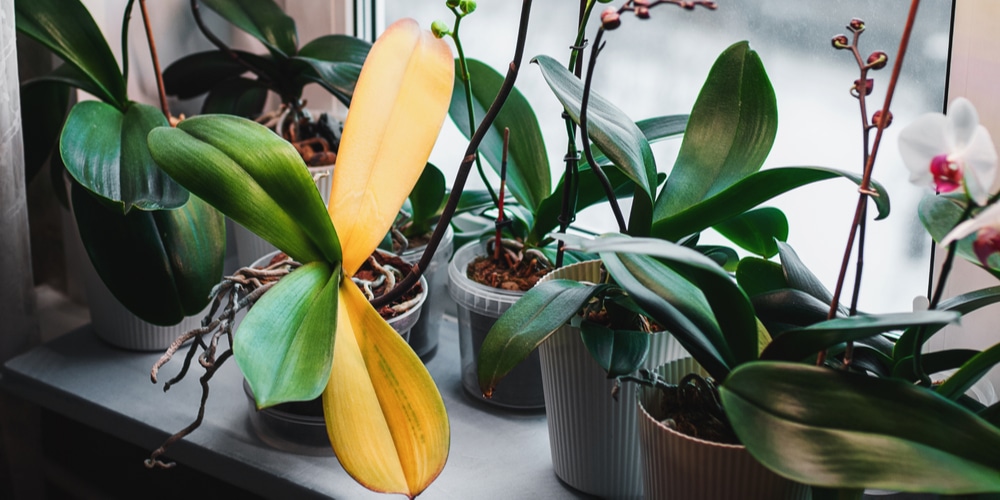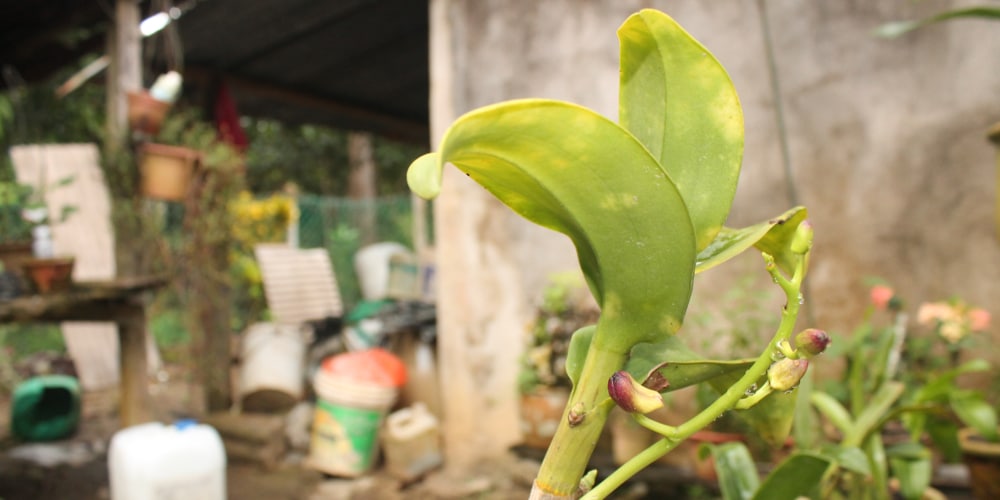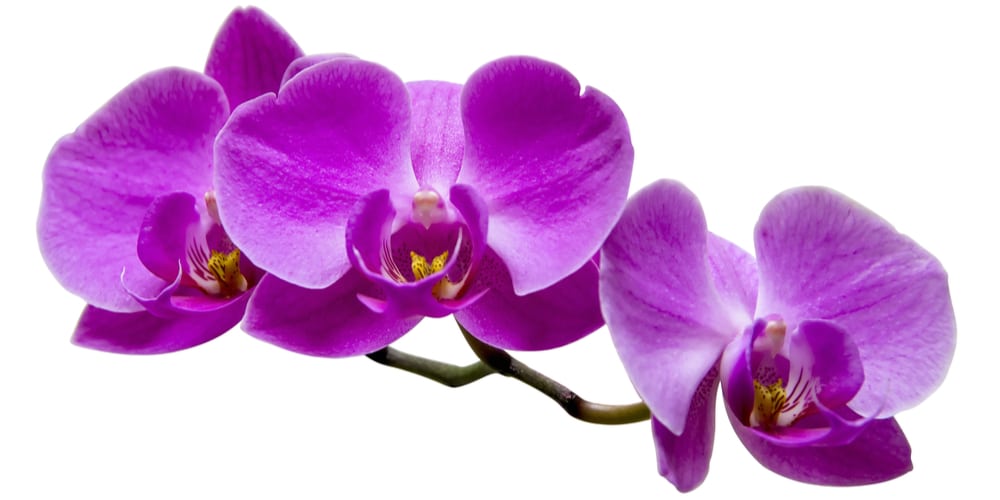Orchids are among the most beautiful houseplants, especially if you like dramatic displays of exotic blooms (and colorful flowers). Most orchids require indirect light and warm and humid conditions. While they are not particularly challenging to take care of, they might present some issues. One of the first things you should look at when worried about your plant is its leaves. When you notice orchid leaves turning brown, it is the first sign that something is off with your plant. However, the cause of brown leaves is not as easy to identify. To help you take proper care of your orchids, here’s a list of what you should do with orchid leaves turning brown.
Why are my Orchids Leaves Turning Brown?
There are various reasons why an orchid’s leave might become brown. The most common include dehydration, bacterial brown spot, sunburn, nutrient deficiency, and inadequate humidity. Luckily, once you spot the root cause, it is relatively easy to help your orchids become healthy again. Of course, the sooner you take action, the better.
Take note of where the leaf starts to turn brown and which ones look less green than the others: is it just the new leaves, the oldest, or both? Also, look at what part of the leaf is turning brown. With these guidelines in mind, keep reading to learn the most common causes for brown orchid leaves and what to do to solve the issue.
Dehydration
Dehydration is visible in the leaves. Indeed, without enough water, they will start to fade and crumble. Before falling off, they will turn brown. Any plant shows these symptoms when dehydrated. In orchids, the condition causes the entire leaf to change its color. When the problem gets severe, eventually, all leaves will turn brown. To make sure that’s what’s causing brown leaves, check to see if they look wrinkly and floppy: that’s another sign that you made some mistake with watering.
Depending on the gravity of the situation, giving your orchid more water might not solve the issue. If the plant is suffering severe dehydration, you might have to unpot your orchid and check its roots. If they look mushy and lifeless, you will have to change the soil. Ensure you give sufficient drainage to your plant. If the roots look green and thick, you must increase the frequency you water your orchid.
Bacterial Brown Spot
If you notice your plant is getting brown in a dot-like manner, you might be dealing with a bacterial infection. The sooner you see tiny spots on the top of your plant’s leaves, the better you will contain the spread of the disease. In general, over-misting or lack of proper aeration cause bacterial brown spots. That’s because the water sitting on the leaf for a long time can kill its outer cell layer and eliminate the barrier of protection against bacteria, fungi, and viruses. The good news is that you can treat this disease by applying hydrogen peroxide on a cotton swap and touching the infected areas.
Sunburn
Excessive sunlight or heat might be other factors causing your orchid’s leaves to become brown. Indeed, you should avoid placing these plants outdoors under the sun or near sources of heat (such as heaters). While some species of orchids withstand light better than others, it is a good idea to ensure they don’t get too much of it. Sunburned leaves will likely bleach to a pale yellow. If you notice that, move your orchid to a place with less sun or consider getting some sheer curtains.
Nutrient Deficiency
Lack of nutrients (specifically phosphorous and magnesium) is another common reason that causes leaves to turn brown. While it may cause your plant to die, nutrient deficiency takes time to attack your orchid.
If there isn’t enough phosphorous in the soil, the plant will look lifeless with reddish-brown leaves. Instead, if you notice some rusty brown spots in the veins of the orchid, you will have to provide it with more magnesium. You can use Epsom Salts to fix both problems. Also, consider increasing the frequency you fertilize your plant and make sure you use orchid-specific fertilizers. If you already fertilize your plant frequently, slightly increase the amount.
Inadequate Humidity
Orchids do not do well in dry environments. While you can solve this by misting your plant, don’t forget you may cause other problems overdoing it. Instead, consider getting a humidifier to ensure the environment around your plant is above 50% in humidity. Many choose to place theirs in the bathroom or the kitchen.
Without adequately humid conditions, your orchid will turn brown and lifeless. At first, the problems might look similar to lack of water, so ensure you give your plant enough water before making other changes.
Orchid Leaves Turning Brown: Conclusion
No one likes unhealthy plants. If your orchid start browning, don’t worry! Now that you know about what may cause brown leaves in your orchid, it is time to take action and do everything you can to keep your plant healthy!


